The OnePlus One Review
by Joshua Ho on November 19, 2014 8:00 AM EST- Posted in
- Smartphones
- Android
- Mobile
- OnePlus
Software
While software tends to be a bit of a side note in reviews, it really is a crucial part of the experience. Without a good UI, the entire experience can be ruined as a result of these issues. This leads us to CM11S, the first official UI released by Cyanogen. For the most part, this UI really is just a lightly re-touched version of what we see in Nexus devices, but with a large number of extra features. For example, we see a revamp of the quick settings menu, with horizontal quick settings in the notification drawer along with a large number of available quick settings tiles in the quick settings menu.
Of course, CM11S goes much deeper. There really is an immense amount of customization available to the end user, from a custom boot animation to new icons, fonts, wallpapers, sounds, and overall system UI themes. While Holo is the official AOSP UI, CM11S ships with Hexo which is largely similar to Holo, but with a strong emphasis on hexagons throughout the UI. Many of the modifications that one might be used to from a custom ROM are present here, such as the ability to dynamically change the battery icon in the status bar, the way that the clock is displayed, reception representation, gestures to turn on the flashlight or the display, re-mapping the rather dim capacitive buttons, enabling or disabling on screen buttons, permissions management, changing the size of a pattern unlock, changing the lock screen altogether, and similar customizations.
While one can spend their time defending choice for the sake of choice, I definitely question the value of all of these additions. While some will value the ability to deeply customize their OS, for anyone that is even remotely unfamiliar with the idiosyncrasies of CyanogenMod and Cyanogen they will find their experience to be deeply frustrating. While I've already detailed some of the usability issues present in the camera application, many of these features fundamentally don't make sense. The notification drawer's "quick access ribbon" out of the box is simply a row of icons that can have very little meaning at times. While one can guess that an airplane is for airplane mode and a flashlight is for the torch, a circular arrow is utterly ambiguous in nature. Given the quick access nature of this menu, one might guess that this is a rotation lock toggle but for one reason or another it's actually the auto-sync toggle.
These issues extend to the point of being outright frustrating for average users. While one might guess that setting up lockscreen protection through the security menu as with almost every other UI, CM11S places it in the lockscreen menu which definitely can make for some level of difficulty in adapting from other devices. Something as simple as the pattern lock becomes complicated as one is given an almost ridiculous amount of choice from a 3x3 to 6x6 pattern. While a 4x4 or 3x3 pattern makes sense, 5x5 or 6x6 is almost guaranteed to be wholly unnecessary for an OS that's supposed to target a large number of users that may or may not be accustomed to the Cyanogen UI experience.
Finally, it's hard to argue for extensive customization of most visual aspects, as it's really far too easy for themes to rapidly diverge from meshing with Google design lines quite rapidly. While I'm sure that there are people out there that will like whatever themes are available using the CM11 theme engine, it's really hard to argue that this is a good thing for cohesive experience. The sheer number of issues with the camera alone is enough to question whether this level of customization is worth dealing with the likelihood of buggy releases.
While there are a lot of issues with Cyanogen's approach of throwing every possible option to the user, to their credit a great deal of the experience does come out quite enjoyable once one has spent enough time actually figuring out what each option does. For example, while on most phones it's pretty easy to fill the status bar with an NFC indicator, WiFi, cellular reception icons, battery icons, battery percentage text, and the time, this can be avoided on the OnePlus One. Various elements can be removed if desired, and things like the privacy guard application allow for a great deal of fine-tuning to ensure that applications don't have more permissions than necessary, although this could cause unintended behavior in an application. In addition, the overall experience has been consistently smooth and performant, with no real lag. The real issue here is that CM11S has taken the kitchen-sink approach to UI design, to the detriment of the user.


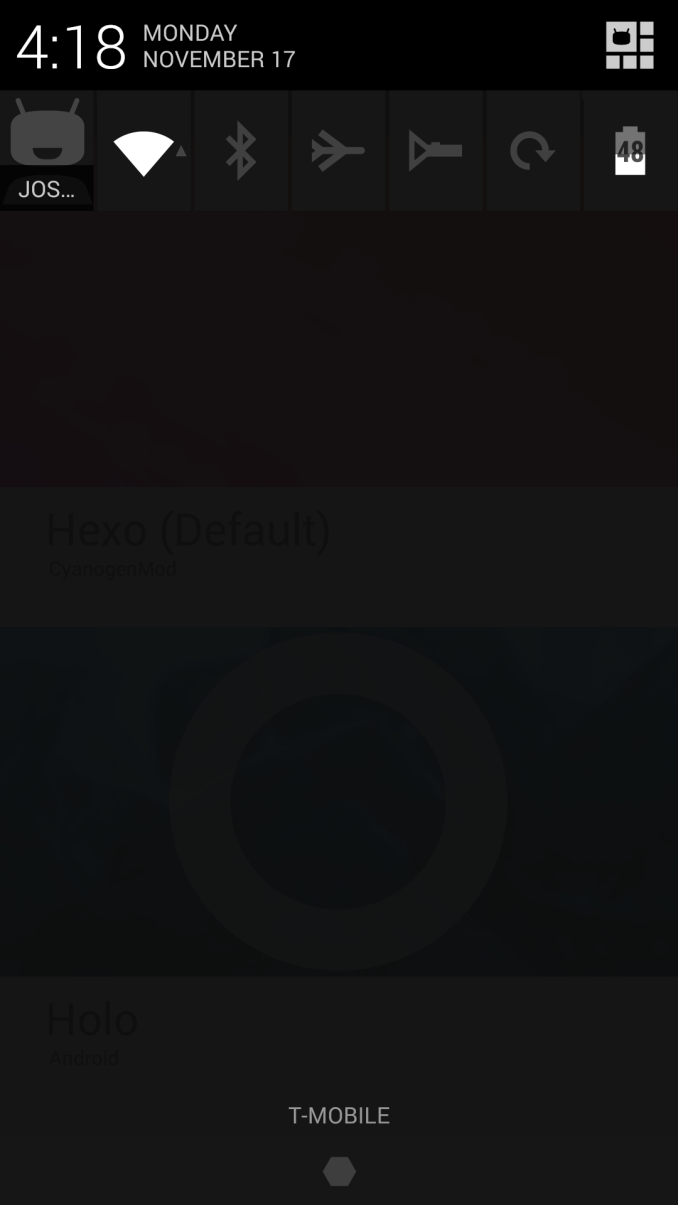

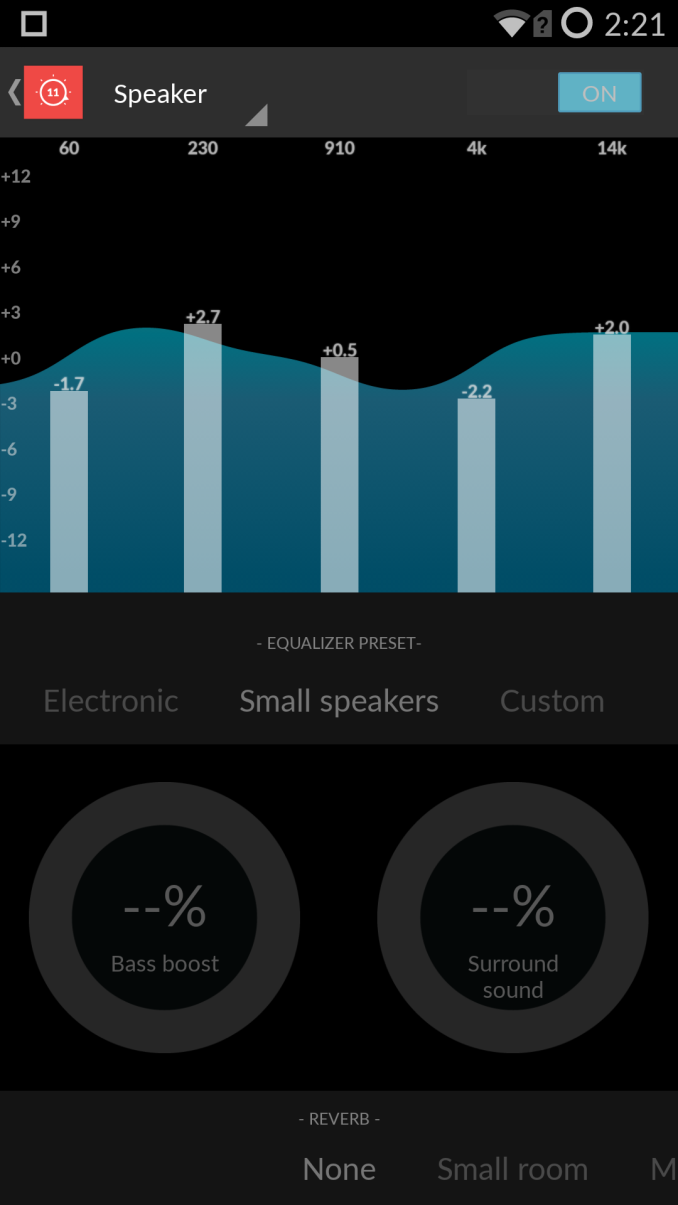
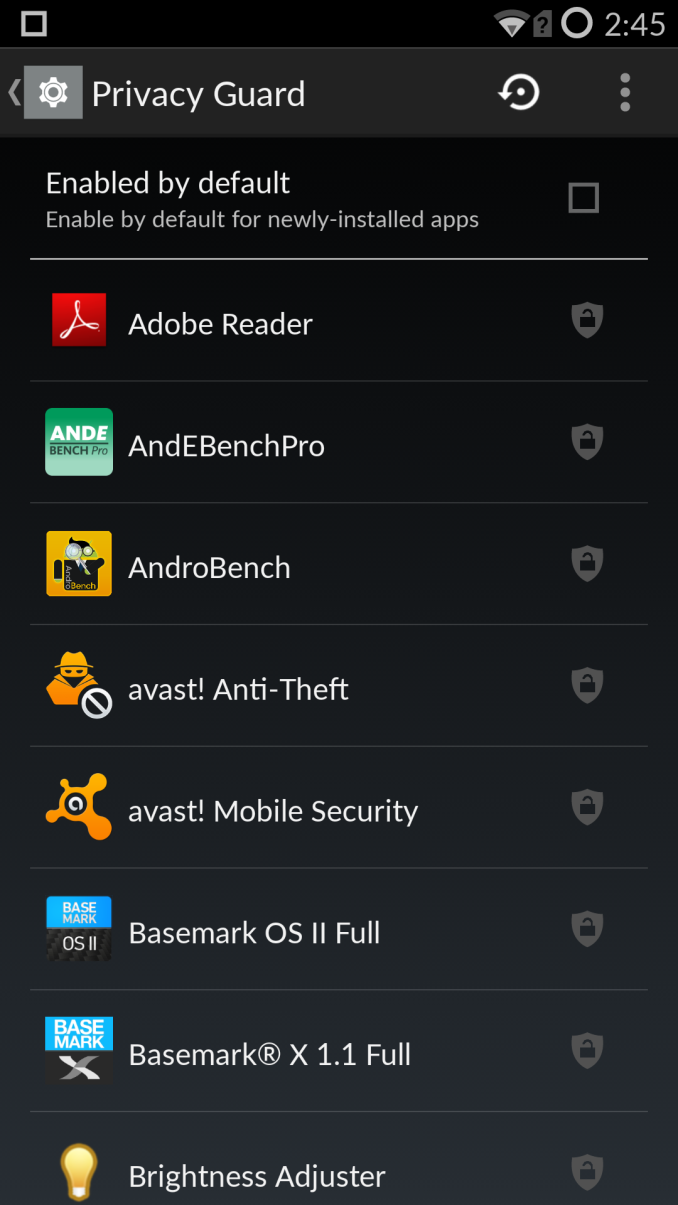
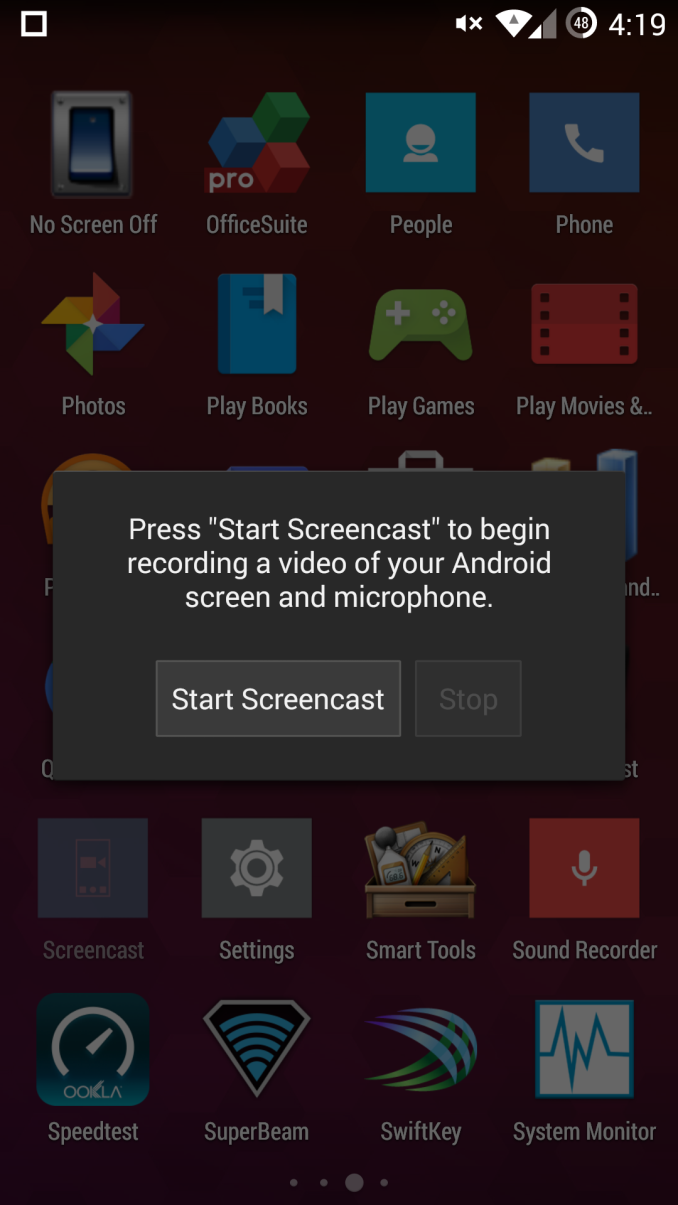
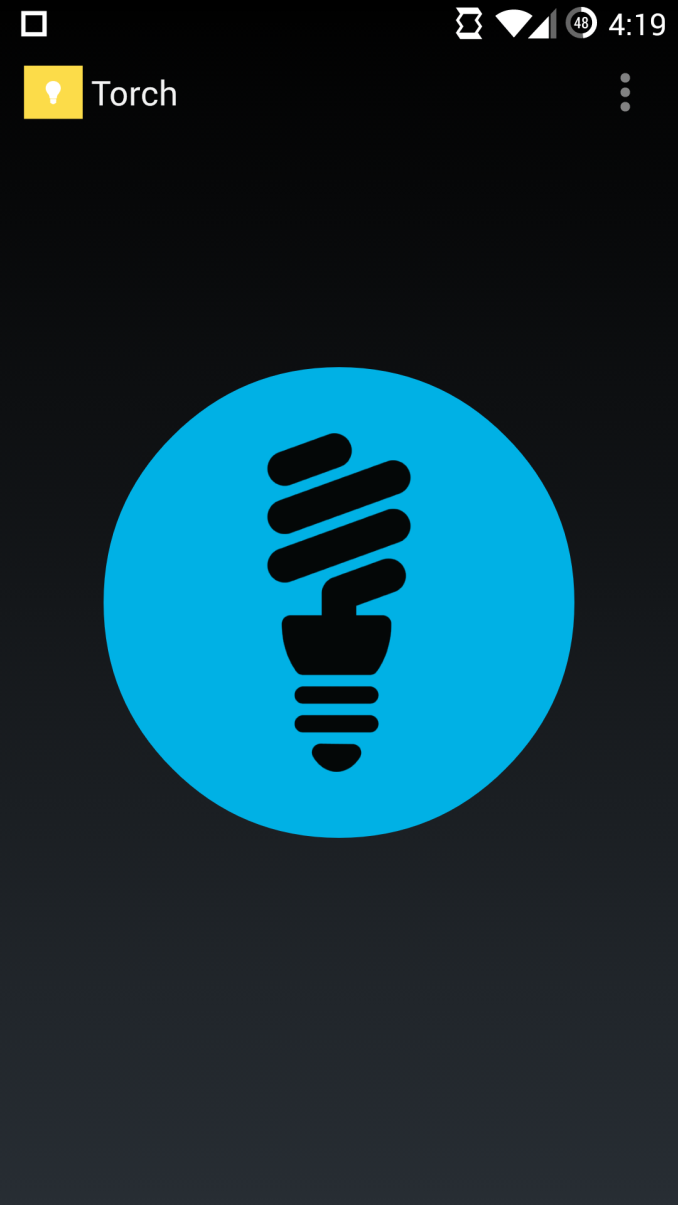
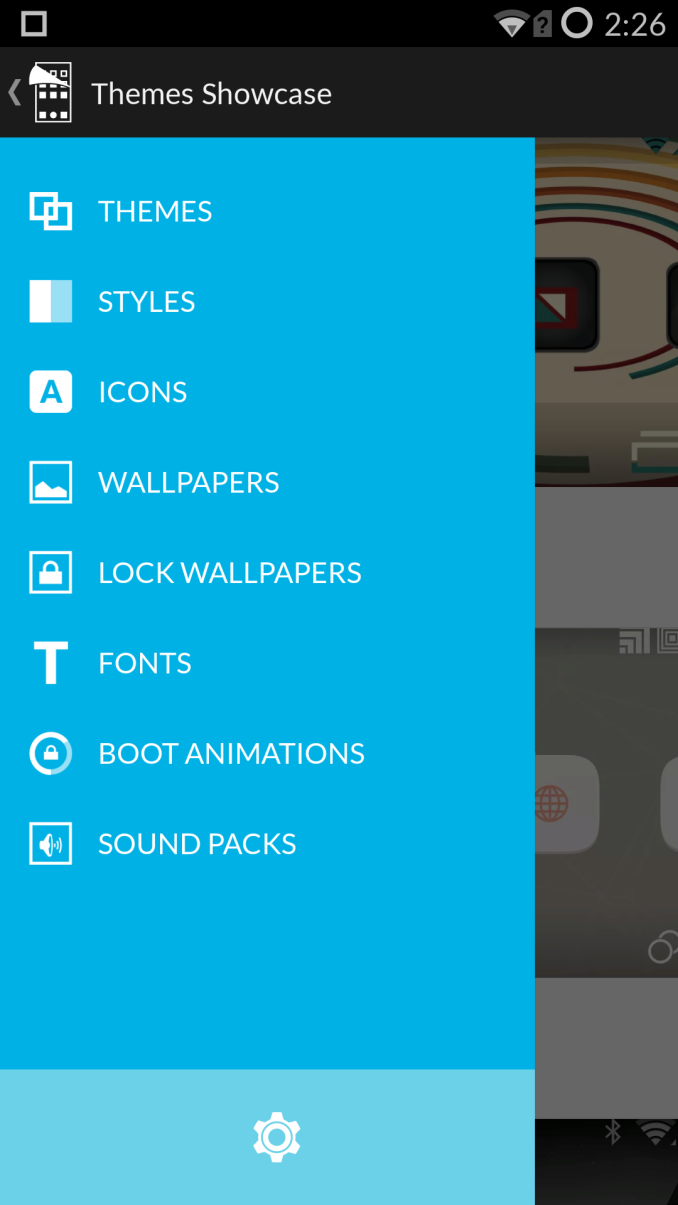
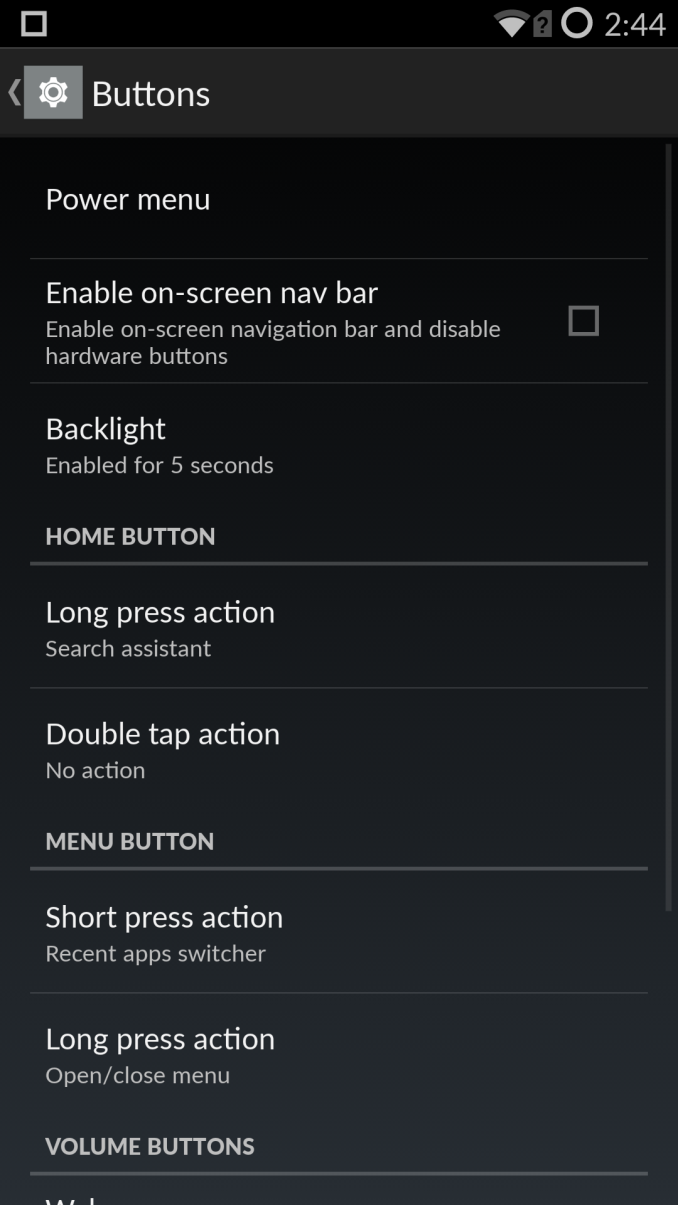
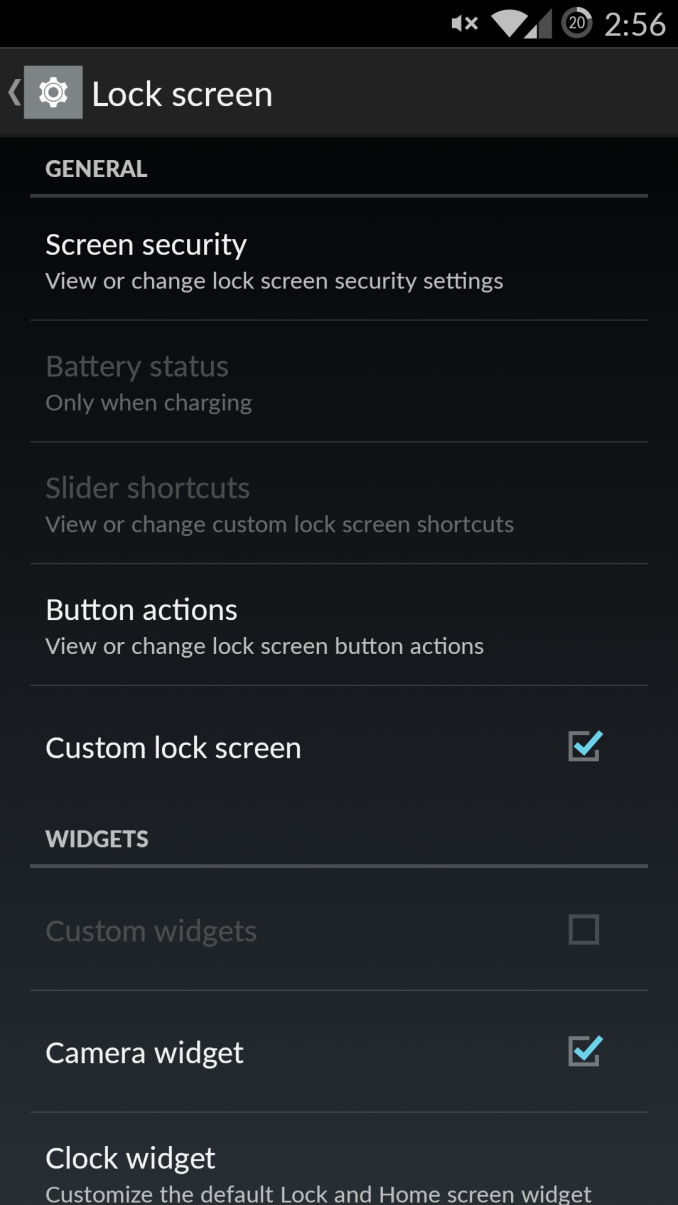
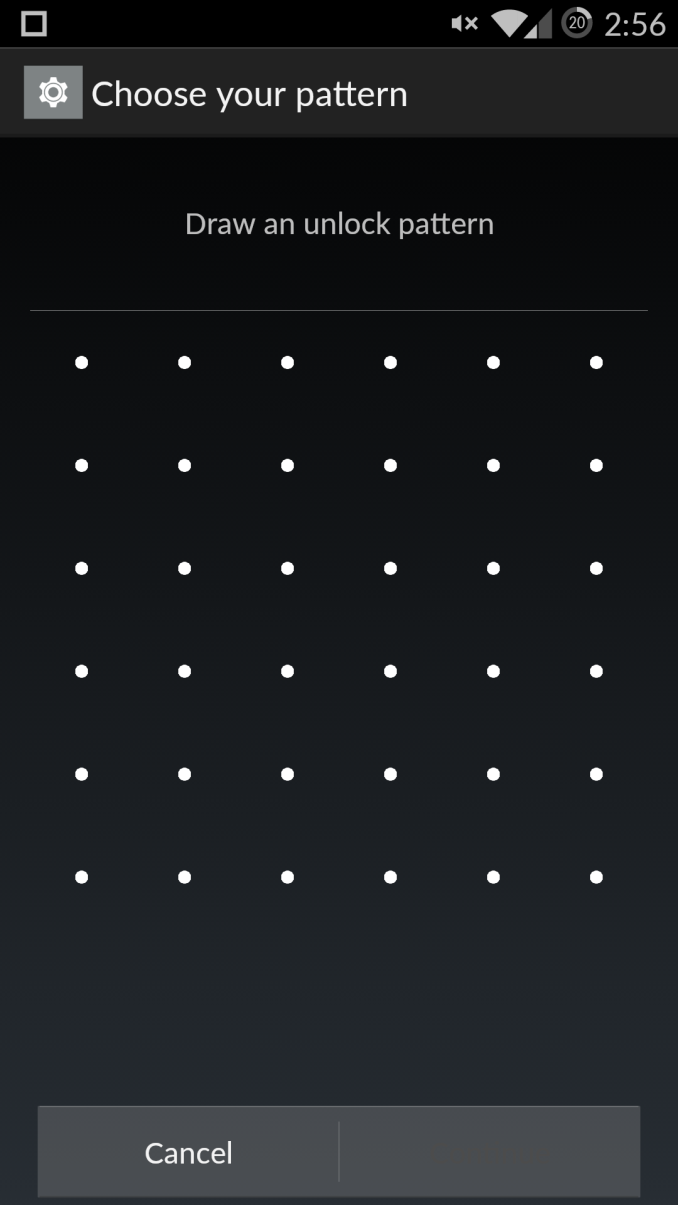
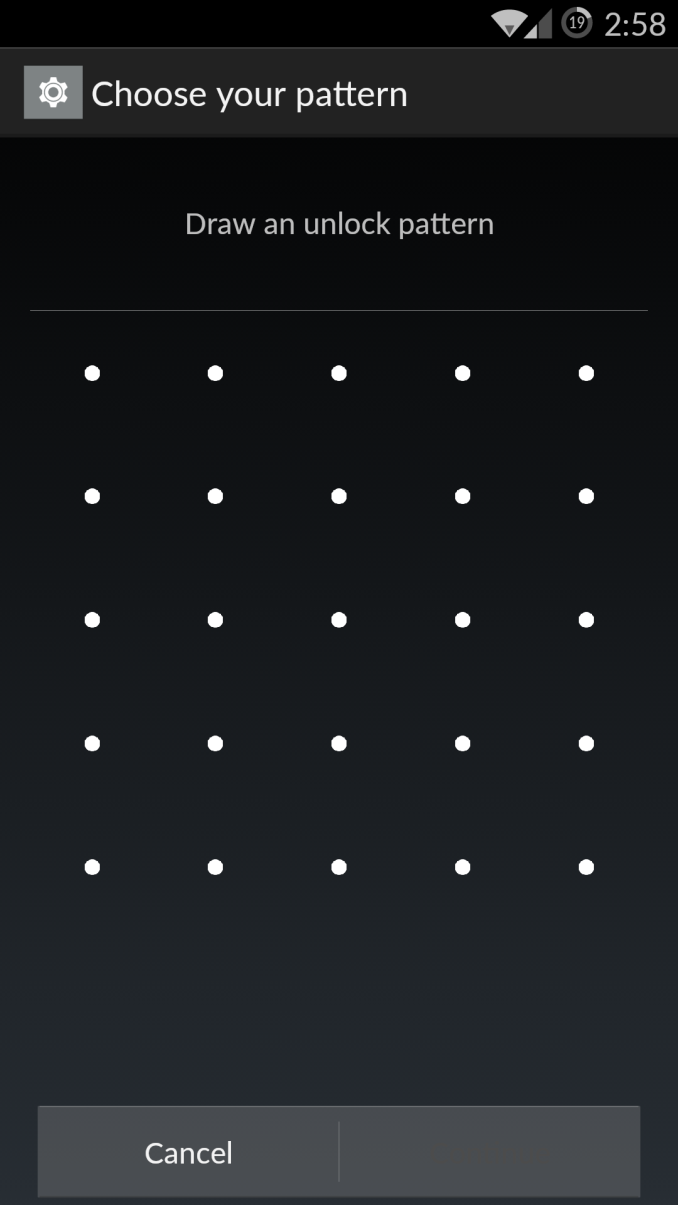
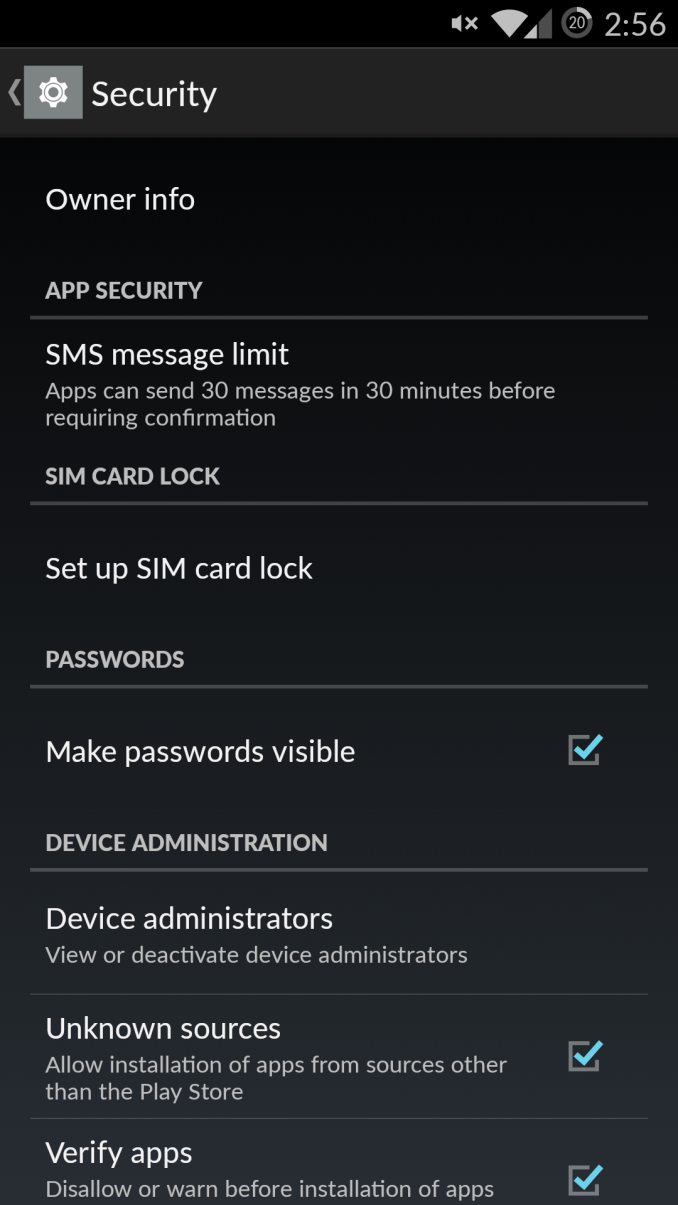
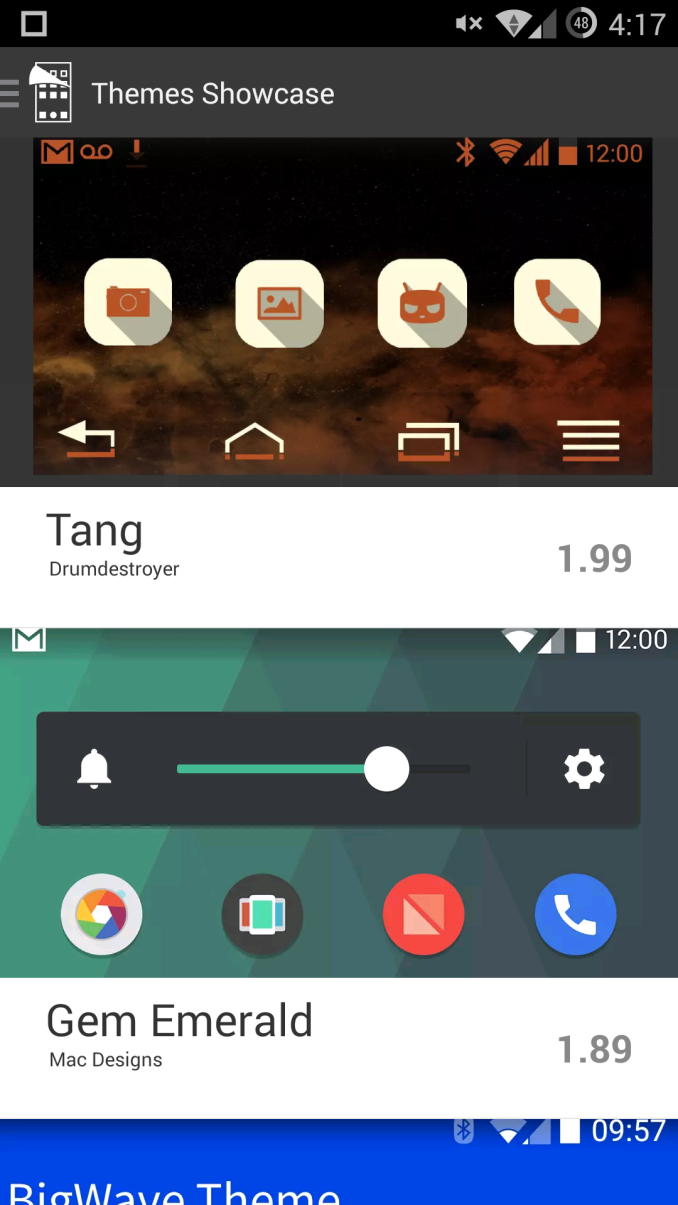
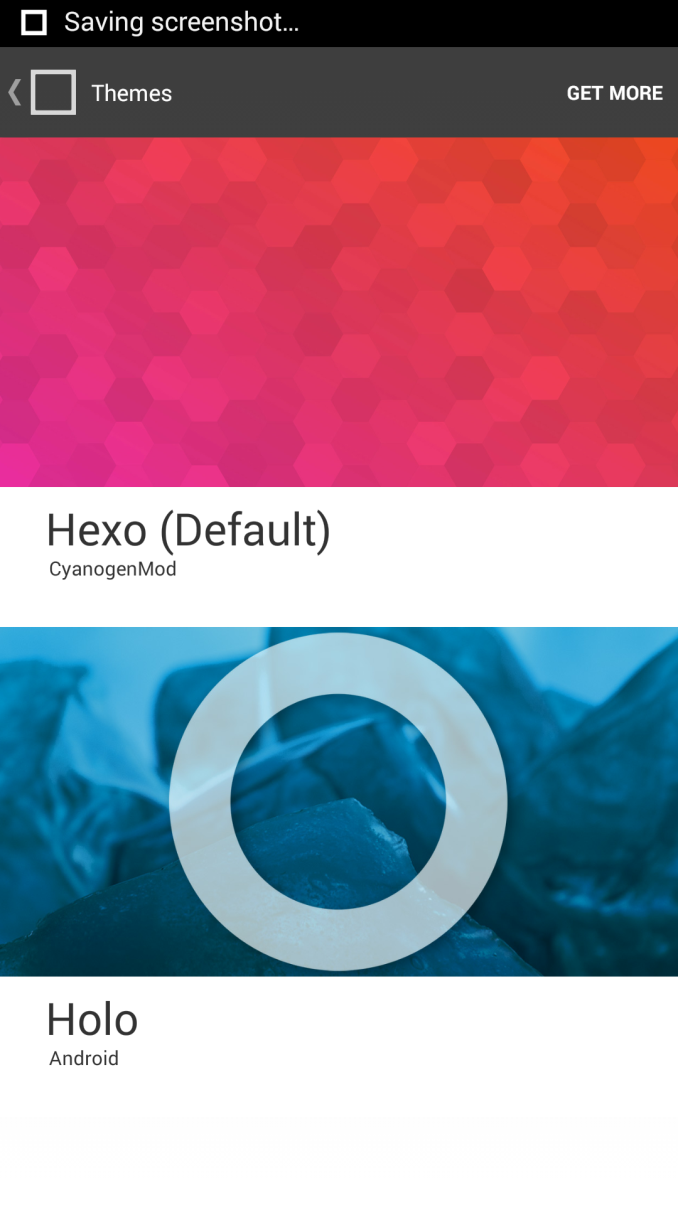








148 Comments
View All Comments
nspyraishn - Friday, November 21, 2014 - link
I would contend the "too big to use with one hand" issue is overblown. I have been using it for a while now and have no problem using it with one hand. MMV, but claiming "it's almost impossible to use it comfortably with one hand" is just plain not accurate, and reflects a strong bias by the reviewers against larger phones. I would contend that if you used the phone a bit longer, you would likely come to appreciate the larger "phablet" size, and find that particularly for its diE it's surprisingly comfortable to use due to innovative form factor design choices. Other than that, a solid review :)Socius - Friday, November 21, 2014 - link
How does it feel to be the idiot who benchmarked this phone on the "balanced" performance profile? Lol. Change CPU to performance mode in settings for serious gaming or benchmarking and you'll see those results jump significantly.Also regarding your comment about cheating...you're being disingenuous. Cheaters clock the chips higher than stock, and temporarily increase thermal limits in order to get performance that wouldn't ordinarily happen. The "cheating" by switching to 2.5GHz is actually a feature in the phone for "per application performance profile." The phone comes with "balanced" mode preselected. But runs An tutu in performance mode, which is a fully selectable and sustainable mode as even your benchmarks showed little to no throttling happening.
Poor review, IMO.
HubbaMaBubba - Friday, November 21, 2014 - link
Holy shit, I didn't notice that. For everyday usage balanced is the best though, so it makes the most sense for the benchmark.Socius - Saturday, November 22, 2014 - link
Actually for daily use I stick to power saver. Other phones benchmarked don't have the CPU profiler installed at stock. So for benchmarking, performance mode should be enabled. And even if you disagree with that, even though the other phones you're comparing to are running in performance mode all the time, you can't make the claim that this phone cheats on benchmarks by running in performance mode.And for the record...in performance mode, this phone dominates all other android devices.
mrex - Wednesday, November 26, 2014 - link
Lol, funny =) hopefully he checked also it is not running max 1036mhz. It is a known faulty setting, and easily fixed by enabling developer options and check that cpu is running at it should and not locked to max 1036mhz. I actually had that issue, and in the performance mode it was still running at 1036mhz before i checked that setting.mrex - Wednesday, November 26, 2014 - link
Hit the submit button accidentally. I was sarcastic about did he check the mhz before testing (his phone was running correctly), but if you feel your phone is slow, check your phone isnt set to max 1036mhz.Jc.ray - Friday, November 21, 2014 - link
I've been using it for a month. Besides some initial bugs to make it work properly which where solved in a couple of weeks I have no other complains. You might prefer to start using two hands for typing but many of us already where doing that with tiny iphone4, as for the rest I am able to manage everything in one hand which in my case is not particularly big. As for the phablet: yes, here is the measure, as much as I love it I haven't used my ipad mini not even once since I received oneplusone, you can just do everything here so, if any, biggest danger is how you scale your internet use for any porpoise with this devicejomo60 - Friday, November 21, 2014 - link
"First, the size is definitely too much to handle".The opo is 152.9mm x 75.9mm, the iphone 6+ is 158mm x78mm.
Your iphone 6+ review had no problem with a phone larger than the oneplus one, and rounded corners "feature" does not make a screen more reachable.
mrex - Wednesday, November 26, 2014 - link
What else can you expect nowadays? Unfortunately I feel that you dont get objective reviews about apple anymore from anandtech. This is a good example.neogodless - Friday, November 21, 2014 - link
Re: terrible camerahttp://robinwong.blogspot.com/2014/09/oneplus-one-...
The hardware of the camera is actually pretty good. There's no getting around the lack of OIS, but otherwise it works well enough when pair with good software and capable hands.
I've had the phone for two weeks. I have little experience with Android and none with Cyanogenmod, but I was not confused about the optional... options that allow you to customize your phone, if you, you know, want to.
The battery charges quickly on my AC charger and the included USB charger, but it charges really slowly on several other micro-USB chargers that I got with Nokia and Motorola handsets over the past two years.
I did notice a little weirdness to the feel of the touch screen, but I put an amFilm screen protector on there, and have no issues now.
I use the phone about the same as I've used smaller phones, though I guess I was never much for one-handed operation. I like the stability of holding the phone and then using my other hand to do all the things.
I think the bottom line is that there's very little you give up in comparison to phones that cost $300 more. I don't think there's anything you can't live without.